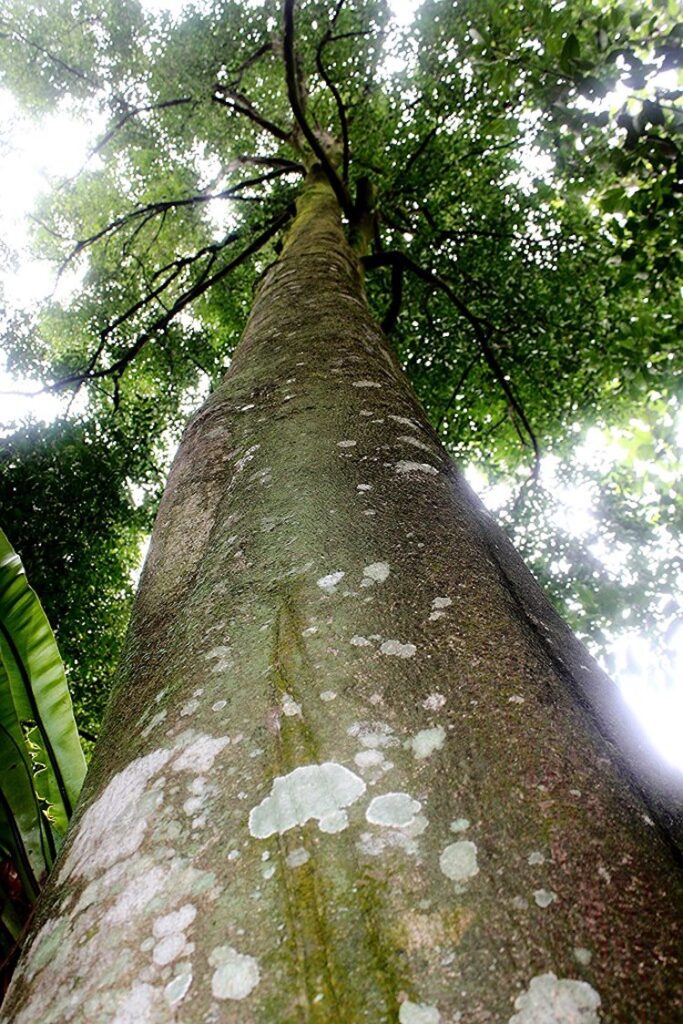Agarwood is the resin-infused fragrant wood known as aloeswood, eaglewood, gaharu, oud, chén xiāng, and jinkoh. When handled appropriately, Agarwood can retain their fragrance over very long periods. The longevity of agarwood fragrance permits its storage and long-distance trade as a high-value commodity, much like precious stones and metals.
Aquilaria species have been the primary source of agarwood. They are distributed eastward from India (Bengal and Assam) to the island of New Guinea and southward from tropical China (Kwantung, Yunnan province), to the Lesser Sunda Islands.
The resin is widely used for incense, perfume (essential oils), and medical purposes. The valuable resin develops and accumulates in the stem and branches of the tree after injury and fungal infection, 2016), but this process occurs in only a few trees in wild populations.

The demand for and trade in agarwood continues today, and with increasing wealth in consumer countries over recent decades, demand exceeds supply. This has resulted in increased prices and over-exploitation, rendering it an endangered species.
Agarwood, described as aloës in classical literature, has several other names. The name probably originates in Dravidian or Indic languages, i.e., Sanskrit and Prakrit. In Sanskrit, agarwood was known as agāru and aguru which means “non-floating wood”. In Arabic medico-pharmacological literature, agarwood is reported as ūd.
The Sanskrit epic narrative Mahābhārata of Indian history describes fragrance in the context of human pleasure, luxury, and well-being. Agarwood was often identified in the text as a display of wealth, a tribute, and a greeting. the people of the ancient city of Khandavaprastha received distant visitors (Madhava and other tribes) by filling every part of the town “with the sweet scent of burning aloes.”
Agarwood is described in the Arthaśhāstra (c320 B.C.E.) as “heavy, soft, greasy, smells far and long, burns slowly, gives out continuous smoke while burning, is of uniform smell, absorbs heat, and is so adhesive to the skin as not to be removable by rubbing.”
Agarwood is referenced several times in the Old Testament of the Christian BibleBible, firstly where Balaam describes God’s vision of Israel and likens their settlements as being “like aloes planted by the LORD.”
In several Buddhist texts, there are references to the use of aromatics in religious rituals. For instance, in the Jātaka tales, which are extensive literary works about the Buddha Birth stories (~ 4th century B.C.E.), agarwood is mentioned in Vol VI no. 542. Within the text, the use of fragrance by women is depicted in the story of a King’s attempt to enter the world of the gods through ritual sacrifice of his most treasured possessions,
including his family. When the sacrifice was prepared, the sons were taken to the sacrificial pit, and there the royal ladies and other women of the town adorned “with aloes, sandalwood, valuable gems and silk robes” paid their respects to the son(s) Canda-Suriya, before going off to the King’s sacrifice (Cowell 1907). Both agarwood and sandalwood, combined with other valuable items, were used as a mark of respect and were already used as valuable fragrant products during ancient times.
In the Qur’an, there are references to aromatics. In several Hadith, agarwood is referred to as a type of Indian incense, i.e., Ūd Al- Hindi or aloes. Agarwood was used in the important practice of fumigation/purification, where Nafi reports on Ibn Umar fumigating with aloeswood either by itself or mixed with camphor. It is known that the prophet Muhammad preferred the scent of aloes or a combination of aloes and camphor.
Credits: ARLENE LÓPEZ-SAMPSON 1 AND TONY PAGE*,2
